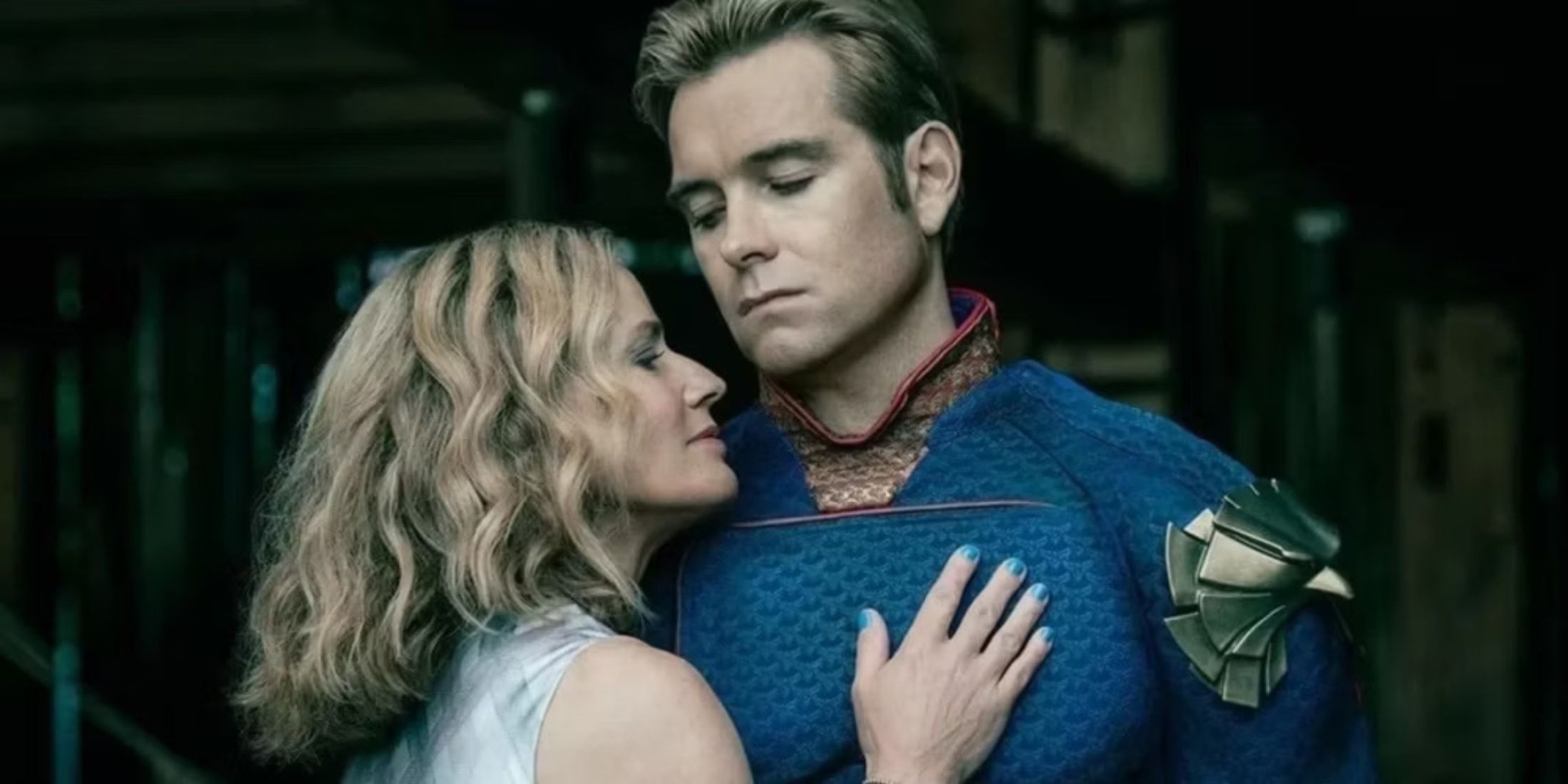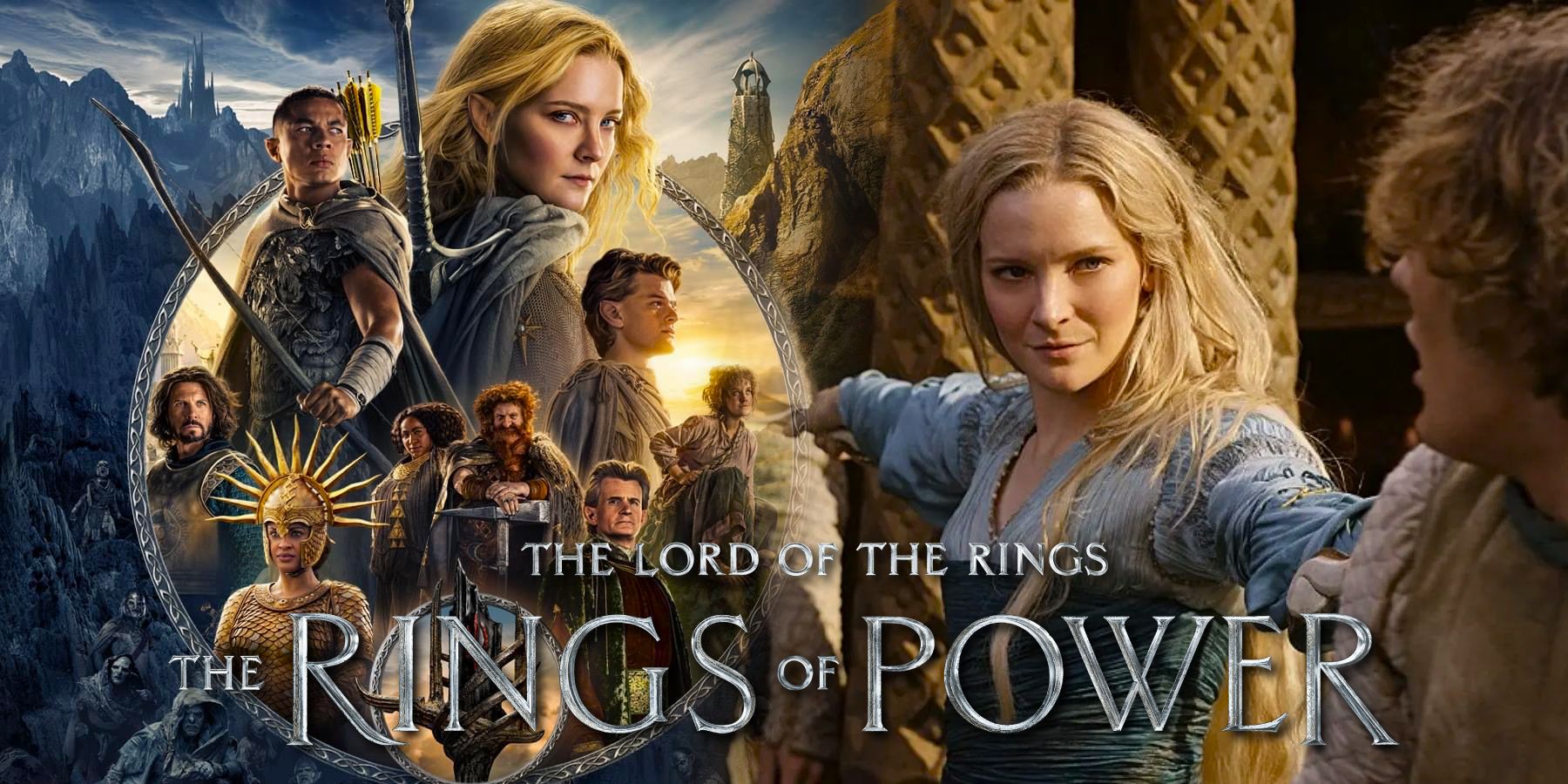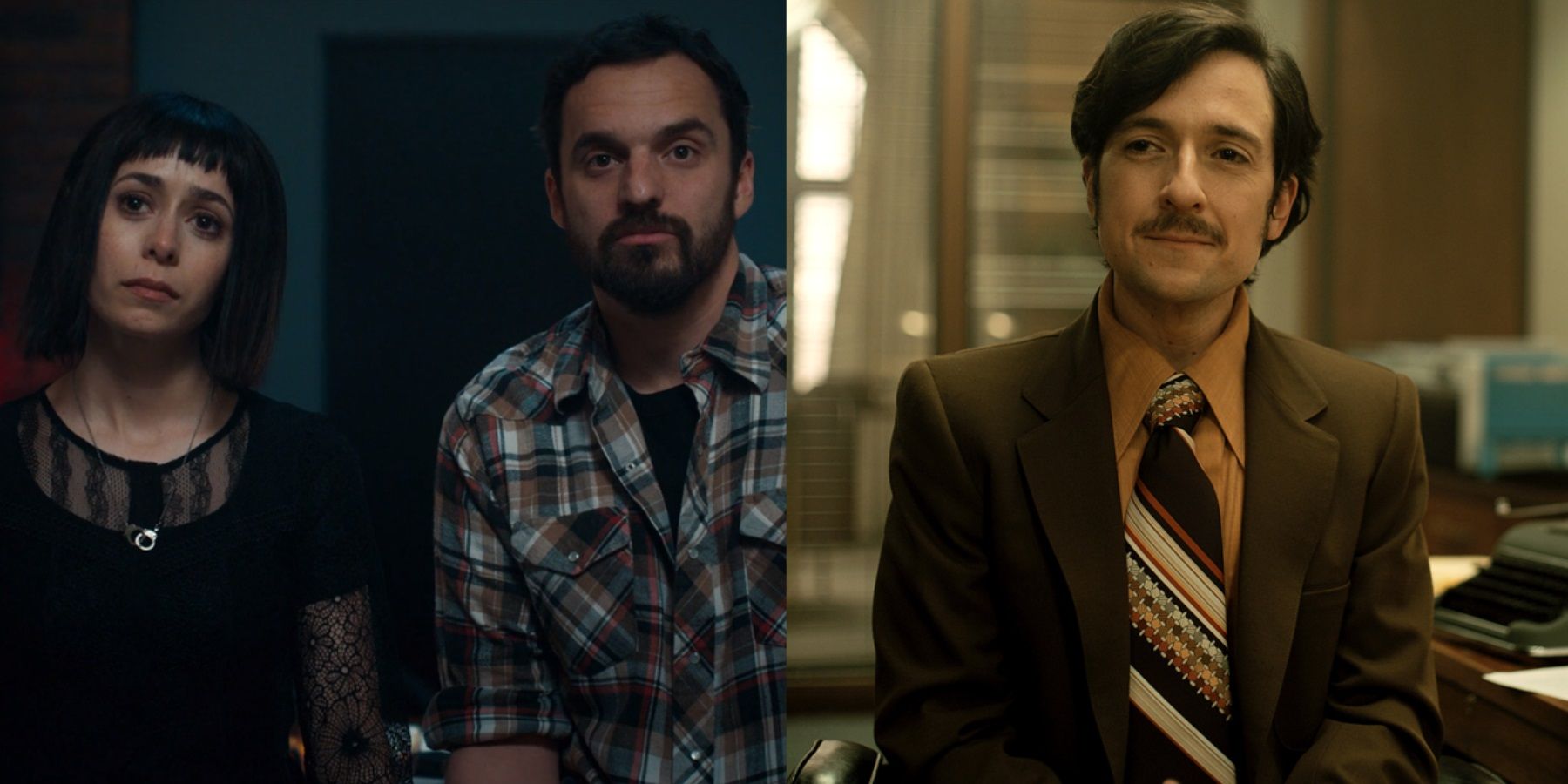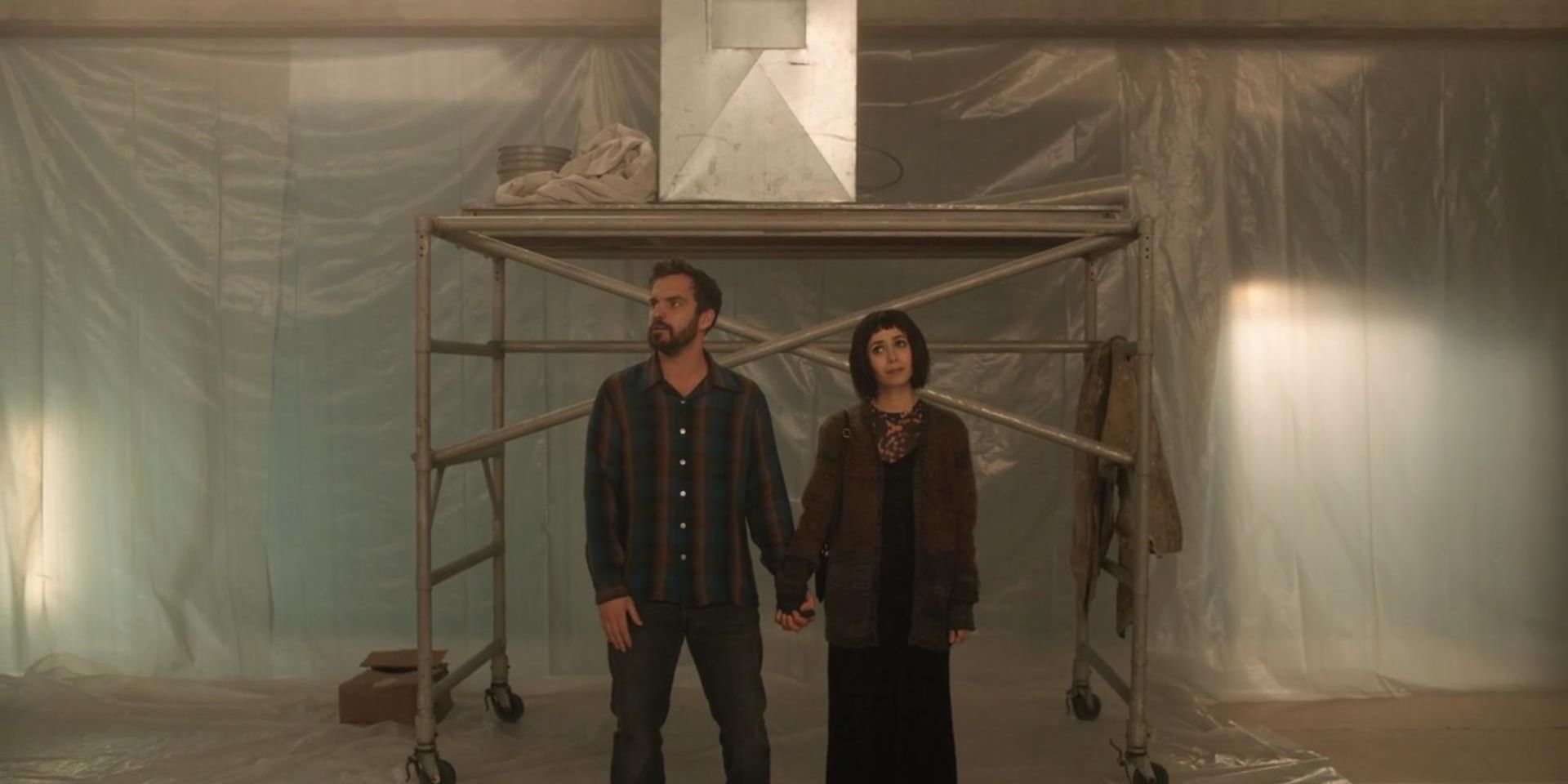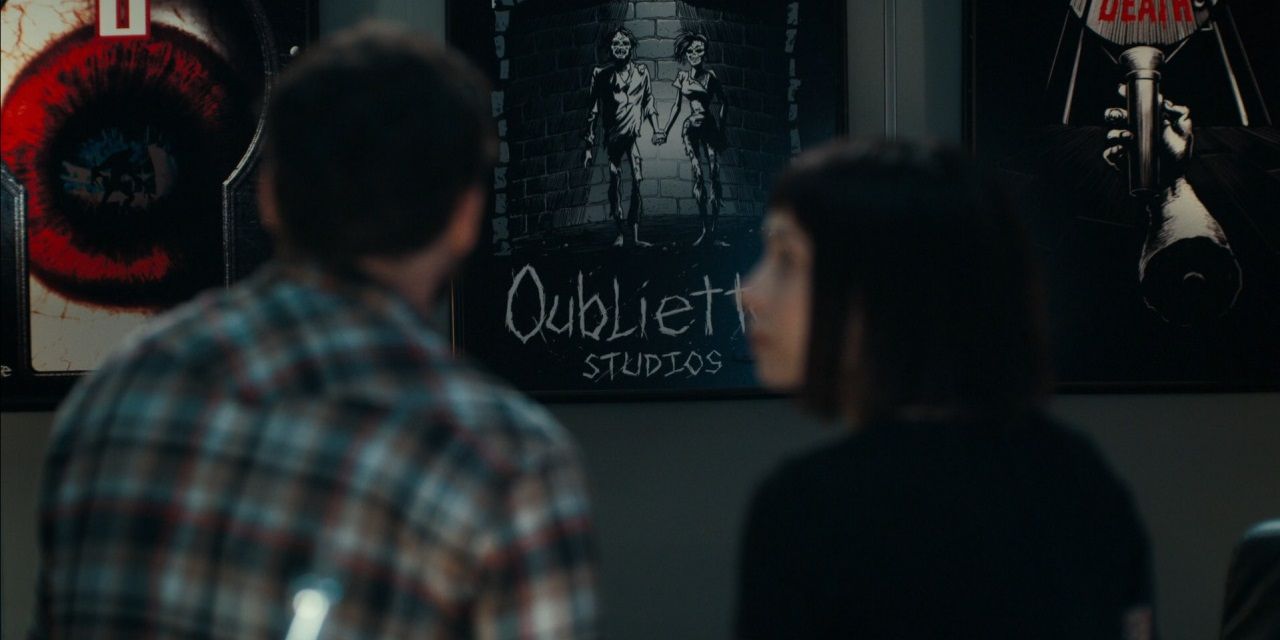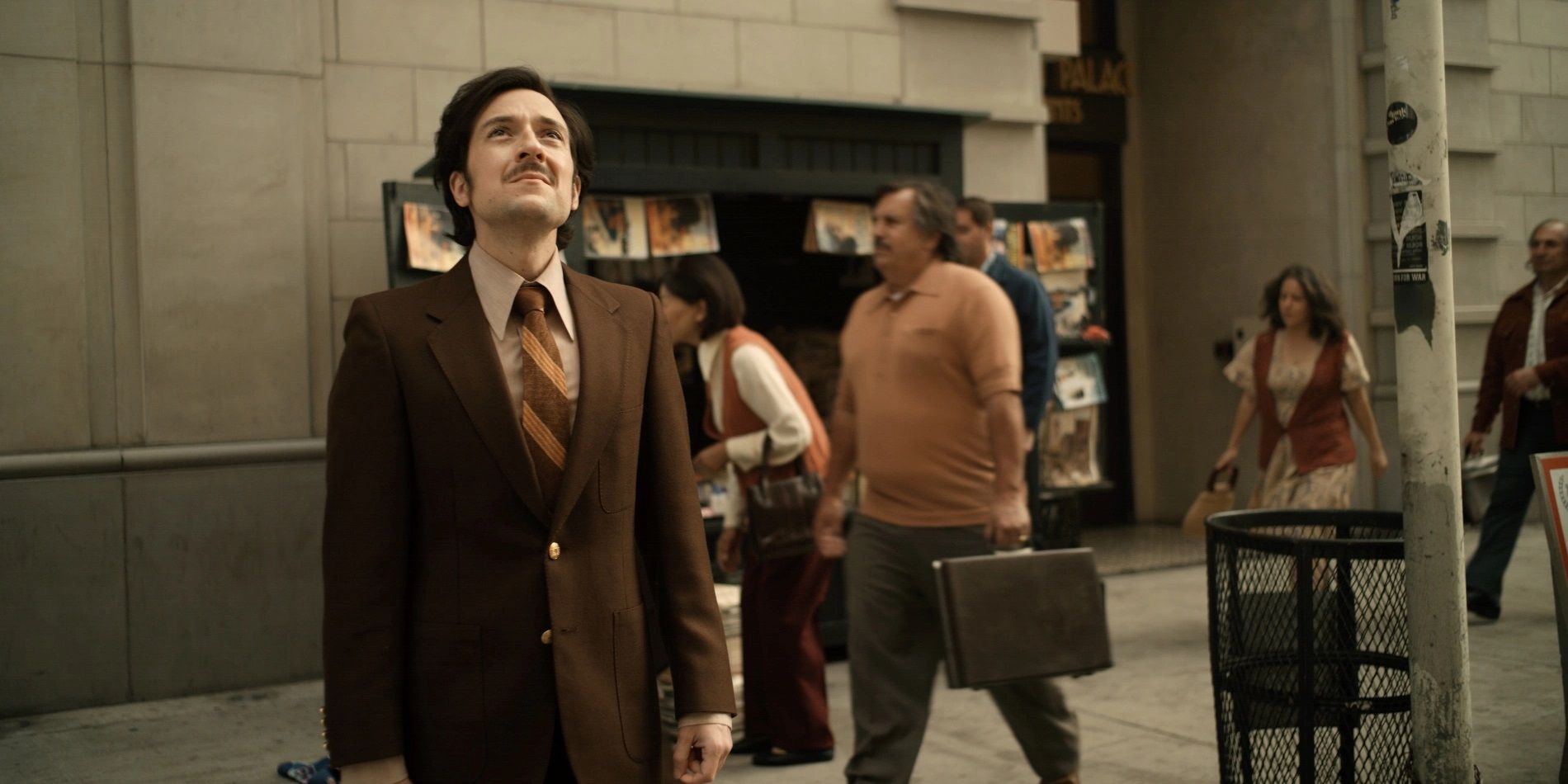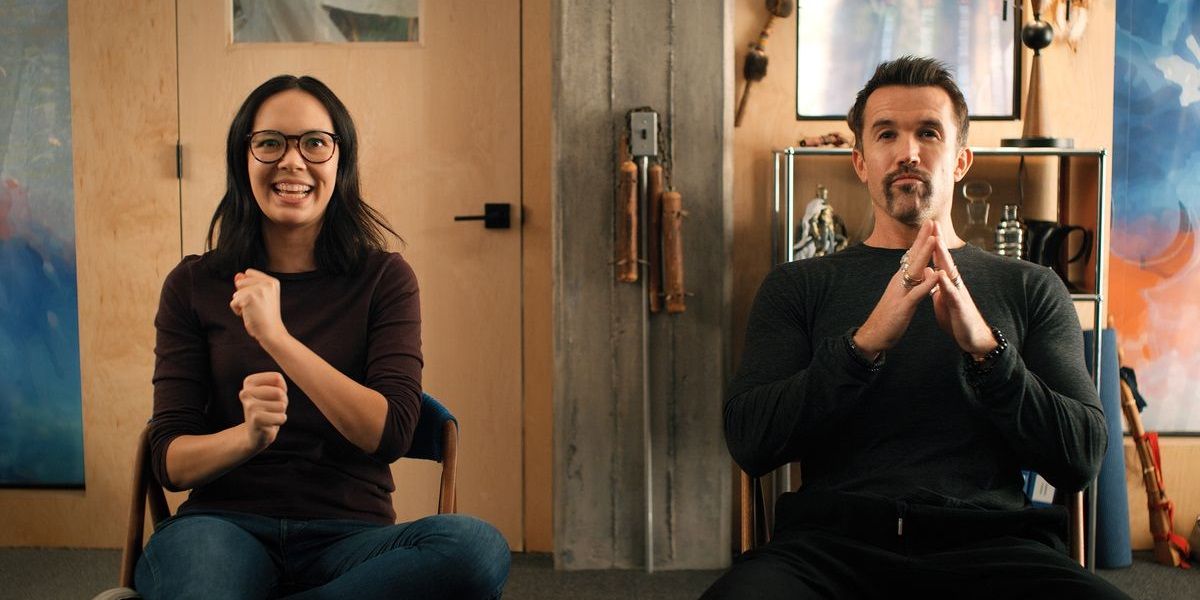Rob McElhenney’s Apple series Mythic Quest is the antithesis of the subversive hit that made him a household name, It’s Always Sunny in Philadelphia. Set in the offices of a video game studio renowned for a Warcraft-style fantasy MMORPG, Mythic Quest is a more traditional workplace sitcom than Always Sunny, with characters that the audience cares about (and who care about each other) and a healthy dose of emotional closure at the end of each episode.
Mythic Quest is the kind of brightly lit show satirized in the classic Sunny episode “The Gang Tries Desperately to Win an Award,” but its pointed humor and bittersweet sincerity make it work beautifully. The series explores some familiar conventions of the sitcom – a will-they-won’t-they couple, an ambitious go-getter working for an egotistical boss, etc. – but it subverts expectations at every turn to avoid the genre’s clichés. A game studio is a unique workplace setting and the writers quickly honed in on the character dynamics that work the best within the first few episodes. Above all, Mythic Quest is anchored by a terrific cast filled with standout players like Charlotte Nicdao as lead engineer Poppy Li and Community’s Danny Pudi as head of monetization Brad Bakshi.
While Mythic Quest is a massive tonal departure from It’s Always Sunny, McElhenney did carry over one tradition that has helped to give Sunny its impressive longevity: experimenting with new styles and formats for episodes. Both the first and second seasons of Mythic Quest have a standalone flashback episode in the middle of their run with a guest cast replacing the main actors. In both cases, the information provided by the flashbacks came back with new relevance in later episodes. With their own self-contained arcs and well-rounded characterization, these standalone installments are a masterclass in storytelling.
The Series’ Fifth Episode Ditches The Main Cast Completely
The fifth episode of Mythic Quest’s first season, “A Dark Quiet Death,” ditches the main cast completely (except for series lead Rob McElhenney, who makes a brief cameo appearance in the mid-credits scene). The razor-sharp script, penned by Katie McElhenney, is an entirely self-contained story about a completely different game franchise spearheaded by a married couple in the ‘90s. This tightly constructed script is a masterful balancing act. Each scene has plenty of room to breathe, allowing the audience to get to know the characters intimately, but the story moves along at a brisk pace and follows a classic rise-and-fall structure.
“A Dark Quiet Death” charts the titular action-horror game’s journey from the top of the charts to the bargain bin through the lens of a marriage that comes together and falls apart along the way. Sometimes, a show can lose its audience’s attention when the familiar cast is benched and a bunch of new people are brought in. But Mythic Quest avoids this problem with genuinely compelling one-off characters played by fan-favorite actors. Jake Johnson and Cristin Milioti star as Doc and Bean, respectively, the creators of the DQD franchise whose tragic love story is framed through the game’s lifecycle.
The gaming elements draw the audience into the story, but that mostly takes place in the background. As Doc and Bean make all the classic mistakes with their relationship, the studio makes all the classic mistakes with their game: a sequel that bows to pressure from executives, a film adaptation that misses the point of the game, a one-note supporting character getting an inflated role, etc. These elements are fun and satirical, but the substance of the story is Doc and Bean’s doomed romance.
Johnson and Milioti share impeccable on-screen chemistry, both comedically and dramatically. After the initial “meet cute,” everything goes downhill. Doc becomes more focused on making sure the studio is happy than making sure his wife is happy. Bean wants to maintain the artistic integrity of the game while he’s happy to sell that out to make some extra cash or satisfy some corporate suits. The episode culminates in a heartbreaking callback to the meet cute that brings the whole thing full circle.
Season 2’s “Backstory!” Is A ‘70s-Set Origin Story For C.W.
After “A Dark Quiet Death” was praised as one of season 1’s strongest and most surprising episodes, season 2 repeated the experiment with “Backstory!,” a ‘70s-set origin story for head writer C.W. Longbottom. This episode was written by Craig Mazin, who is both the creator of HBO’s Chernobyl and the writer-director of Superhero Movie. Young C.W. is played by Josh Brener, best known as Big Head from Silicon Valley, who does a fantastic job of capturing F. Murray Abraham’s combination of grandiose line deliveries, unearned confidence, and cringeworthy shamelessness. Shelley Hennig and Michael Cassidy co-star as fellow writers Anne “A.E.” Goldsmith and Peter Cromwell, respectively.
Like “A Dark Quiet Death,” “Backstory!” is a standalone narrative about a trio of aspiring sci-fi writers who land jobs as copy editors at Amazing Tales, where they spell-check and re-type stories by the greats, from Ray Bradbury to Ursula K. Le Guin, while trading notes on their own writing. Although Peter and Anne are mostly complimentary about each other’s work, they both feel that C.W.’s storytelling is fundamentally flawed. He tries to fix it, but he makes surface-level changes that don’t address their criticisms, and he becomes increasingly frustrated with their negative feedback.
At a crucial turning point in his sharply crafted arc, C.W. boldly gives his story to legendary sci-fi author Issac Asimov. Asimov sends back the manuscript with a laudatory note telling C.W. that he wrote a great story and that Asimov has made a couple of suggestions for improvements. Initially, C.W. is elated that one of his heroes enjoyed his story so much – then, he opens the manuscript and finds that Asimov has replaced literally every single line of the story with his own prose. This leads to a game-changing plot turn that spectacularly pays off the running joke of C.W. lording his Nebula Award over everybody with the revelation that he only won the award by implementing all of Asimov’s changes. “Backstory!” is set up as a story about the origins of C.W.’s career, but it focuses on the bitter jealousies and resentments of a love triangle.
The Episodes’ Significance Wasn’t Immediately Clear
“Backstory!” didn’t just copy the standalone element of “A Dark Quiet Death.” Like “A Dark Quiet Death,” the relevance of “Backstory!” wasn’t immediately obvious in the larger context of the series. But, in both cases, the show followed up on the one-off flashback storylines within the main narrative. The information from “A Dark Quiet Death” comes full circle in the season 1 finale when Ian reveals that Mythic Quest is based in the same office space where the DQD franchise rose to prominence and fell from grace. He learns from his predecessor Doc’s mistakes and gives Poppy the title of co-creative director to avoid driving her away.
The information from “Backstory!” comes full circle in the following episode, “Peter,” which jumps back to the present day with the great William Hurt playing an older Peter as Rachel drives C.W. to Peter’s house so he can exact revenge for his marriage to Anne. The majority of the episode’s runtime is taken up by an awkward confrontation between aging romantic rivals, but against all odds, they eventually reconcile their friendship. Ultimately, this episode is a sweet reminder that it’s never too late to make amends.
Mythic Quest has been renewed for a third and fourth season, so the writers have a chance to continue this tradition. They could go even further into the past with episodes set in the 1950s and the 1930s, or McElhenney and co. might have another narrative experiment up their sleeve altogether.

